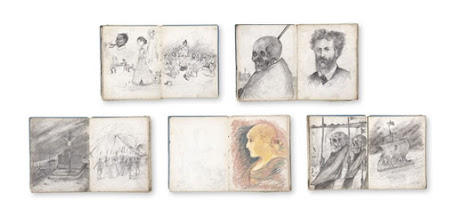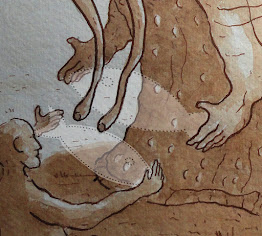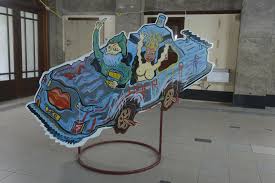I haven’t put up many posts on graffiti and yet as an art form it is probably the closest to pure drawing. I wonder if its my age or a certain unconscious bias that has kept me away from reflecting on an area of art making that surrounds me and where I can walk out and see good examples of it within seconds of emerging from the house. I did a few years ago put a book together about the streets texts of Chapeltown where I live, ‘Wits Breath Edion’, https://www.blurb.co.uk/books/2308745-wits-breath-edion and its still available on-line but I have not been alert to the latest developments of a movement that continues to be very powerful globally. However I need to remind myself of the issues involved because I have just been given an MA level graffiti artist to supervise, and so as I go through the process of preparation by reacquainting myself with some of the key background issues thought it would also be an opportunity to develop a blog post outlining what I think are the key issues surrounding graffiti art form practices.
You could define graffiti as an art form of the proletariat, being an old left wing socialist I have always thought of it as a way of making marks on a property canvas; by this I mean that walls or the surfaces on which graffiti is made, are usually owned by someone and yet the images made on them are usually produced by those who own little or nothing. This I do understand is an old trope or stereotype and as I pointed out just the other week, stereotypes are dangerous so perhaps I’d better broaden my definition.
A Marxist reading of graffiti would highlight how it works in terms of stages in the redistribution of property. In this case the use-value of a wall or other surface is becoming appropriated by the graffitist and the surface’s owner is losing control over one of the meanings of his or her property. However many current graffiti artists are using their style for commercial gain, the spray paints they use are expensive and the culture from within which they operate is much more complex than that attacked by certain urban revolutionaries. For instance a Banksy image stencilled on a wall can increase its value considerably and yet at the same time he is very critical of certain capitalist values and his work is often considered a left-wing critique of the establishment.
In 2001 IBM employed graffiti advertising by spray-painting images on pavements.
Ogilvy and Mather: IBM Linux ad
The ad agency Ogilvy and Mather were using graffiti images to bring attention to IBM’s launch of a new Linux based e-server by linking in the idea of graffiti to the counter-cultural roots of Linux as open-source, community-driven software. This awareness of commercial possibilities was a product of capitalist appropriation and for some time before this there had been a gradual drift of street art into gallery spaces, the most notorious perhaps been the parallel careers of Jean Michel Basquiat and Keith Haring.
Basquiat's work was highly political, it questioned everyday racism and the fluid nature of identity and Haring supported rallies against apartheid and the campaign for nuclear disarmament as well as being an early AIDS awareness advocate. Both artists emerged from the New York graffiti scene, hence their left wing credentials and were taken on board by fine art galleries. It has been argued therefore that their early left wing stances were appropriated and neutered by being turned into commercial products. It is this argument that now lies central to the ambiguous nature of more recent writing about graffiti, is it truly a style of the streets or is it yet another platform for wannabe gallery artists? I don't have an opinion on this and think it's too complicated an issue to unpick as I don't know enough about the current situation, however anyone thinking of developing a graffiti practice does I think have to at least be aware of the issues.
When Sony decided to use graffiti type images on the streets of American cities, of urban kids playing with the PSP handheld device as if it were a street culture icon, there was an immediate backlash from the graffiti community. However the line had now been blurred and a number of graffiti artists, including Mike Giant, Pursue, Rime, and Noah have used their street credentials to support new careers in the design of skateboards, T shirts and other urban wear including shoe design.
'Become a walking art installation with the Dr. Martens X Jean-Michel Basquiat collection. Iconic silhouettes are adorned with Basquiat illustrations to take your look to new levels' Text pasted from Doc Martin's website.
Doctor Martin's in the case above suggesting that by buying their boots decorated in imagery derived from Basquiat's paintings, the wearer can become a walking art installation. What this image also suggests is how much humans need imagery in order to brand themselves as belonging to certain 'urban tribes'. In this case the wearer can suggest an interest in creativity, urban style, black street culture as well as suggesting an edginess due to the fact that everyone knows that Basquiat was a drug addict and that he died young like so many teen icons.
Haring seemed to understand the very ancient roots of graffiti, and as soon as you see his imagery painted directly onto his body, you get a sense of how 'tribal' some graffiti is.
The idea of 'street culture' is now so embedded into contemporary consciousness that cities like Birmingham are now bringing together comic book, dance, skateboarding and graffiti as annual festivals celebrating the contribution of street life and culture to the city.
The idea of the mash up, where street art meets music in a
Thoughts from the Los Angeles graffiti scene
When writing is not writing, the way that even the removal of graffiti creates meaning









































